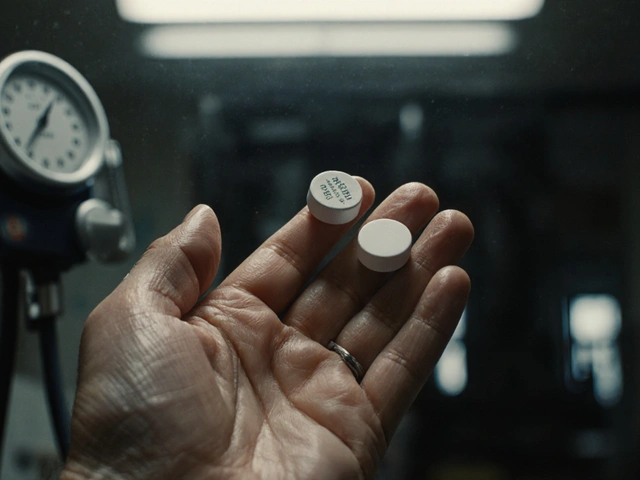Clonidine vs Guanfacine: Key Differences and What Works Best
When it comes to managing Clonidine, a central alpha-2 adrenergic agonist used for high blood pressure and ADHD. Also known as Catapres, it works by calming the nervous system to lower heart rate and blood pressure. and Guanfacine, another alpha-2 agonist, often prescribed for ADHD and sometimes hypertension. Also known as Intuniv or Tenex, it has a longer-lasting effect and tends to be gentler on the body., many people get confused. Both are alpha-2 agonists, a class of drugs that reduce sympathetic nervous system activity, but they’re not interchangeable. One might work wonders for you while the other leaves you dizzy or sleepy. So what actually sets them apart?
Clonidine kicks in fast—usually within an hour—and its effects last about 6 to 8 hours. That means you might need to take it two or three times a day. It’s often used when you need quick blood pressure control, like in a hospital setting or for sudden spikes. But because it wears off quickly, it can cause rebound hypertension if you miss a dose. Guanfacine, on the other hand, is slow and steady. It builds up over days and lasts 24 hours, so once-daily dosing is common. That makes it easier to stick with, especially for kids or people managing ADHD long-term. While Clonidine can cause dry mouth, drowsiness, and low blood pressure more intensely, Guanfacine tends to be calmer on the system, with fewer crashes and less risk of withdrawal symptoms.
For ADHD, Guanfacine is often the first pick because it’s less sedating and doesn’t cause the same level of fatigue as Clonidine. Parents and teachers notice kids stay more alert and focused without zoning out. Clonidine is sometimes added on if ADHD symptoms aren’t fully under control, especially for sleep issues or tics. For high blood pressure, Clonidine is still used, but Guanfacine is gaining ground because of its smoother profile. Neither is a first-line treatment anymore—most doctors start with ACE inhibitors or calcium channel blockers—but they’re valuable when other meds don’t work or cause side effects.
You’ll find posts here that dig into how these drugs interact with genetics, how they affect sleep patterns, and what real patients report after switching between them. Some people try one, hate the side effects, and switch to the other—only to wonder why it took so long. Others use them together under strict supervision. Whether you’re managing hypertension, ADHD, or both, understanding the subtle differences between Clonidine and Guanfacine can save you from unnecessary discomfort and help you find the right fit.
Clonidine vs Alternatives: Detailed Comparison Guide
A detailed guide comparing Clonidine with common alternatives, covering mechanisms, uses, dosages, side‑effects, and how to choose the right drug.
About
Medications
Latest Posts


Therapeutic Failures: When a Generic Drug Doesn't Work as Expected
By Orion Kingsworth Nov 17, 2025

Womenra (Sildenafil) vs Viagra, Cialis & Other ED Drugs - 2025 Comparison Guide
By Orion Kingsworth Oct 12, 2025
Embrace a Healthier Lifestyle with American Dogwood: The All-Star Dietary Supplement that Delivers Results!
By Orion Kingsworth Jul 16, 2023

